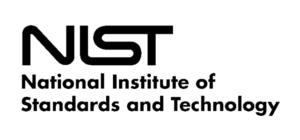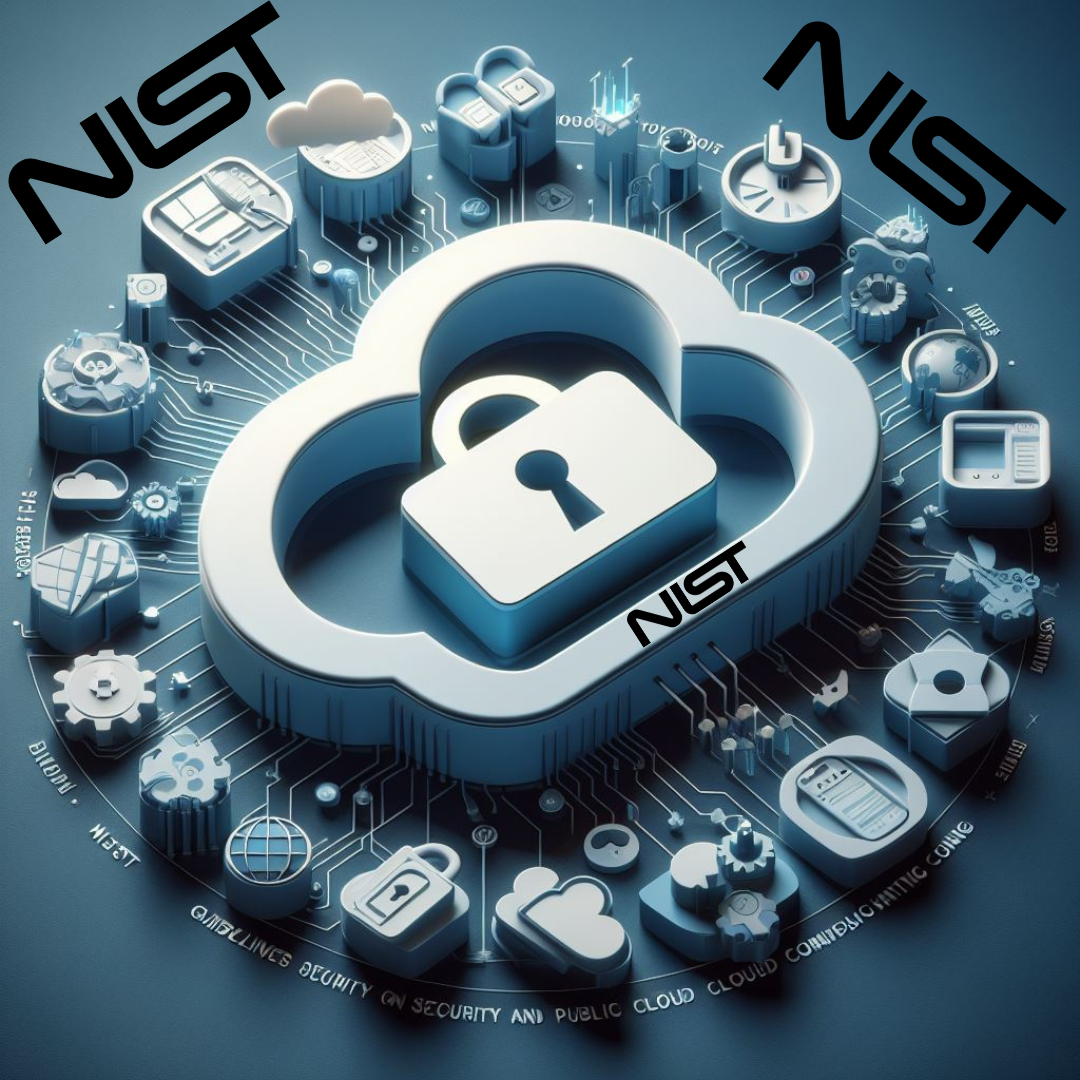What is NIST?

NIST 800-144 serves as the United States’ guidance on cloud computing, emphasizing security and privacy within the public cloud domain. Much like the UK’s NCSC guidance, NIST 800-144 is crafted to offer insights into considerations when implementing cloud computing, placing particular emphasis on threats, technology risks, and protective measures.
These NIST guidelines prove invaluable for organizations evaluating cloud service providers, aiding in the analysis of how well a provider aligns with their requirements. While not a mandatory compliance standard, many organizations showcase their alignment with this guidance.
The primary objectives of NIST 800-144 are to assist organizations in:
- Strategizing security and privacy aspects before engaging with cloud solutions.
- Gaining a comprehensive understanding of the public cloud environment provided by the chosen cloud provider.
- Ensuring that the selected cloud solution meets the security and privacy requirements of the organization.
- Upholding accountability for the privacy and security of data and applications deployed in public cloud environments.
Intended for a broad audience, including system managers, executives, information officers, security professionals, system and network administrators, and general users. NIST 800-144 contains technical content presented in a way that is accessible to those without a technical background.
Enhancing Cloud Security: Unveiling the Significance of NIST 800-144 Guidelines
NIST 800-144 plays a crucial role in addressing the myriad privacy and security challenges associated with the integration of cloud services. The guidance is crafted based on recommendations that stem from these challenges, forming a solid foundation for securing cloud environments.
Governance:
This pertains to the control and oversight exercised by an organization over policies, procedures, and standards related to application development, IT service acquisition, and the entire lifecycle of deployed services. It ensures a robust framework for managing cloud resources.
Why is governance in cloud services important?
Effectively governing cloud computing services requires seamless alignment with the existing policies and procedures of the implementing organization. It is crucial to avoid the oversight of privacy and security implications during service implementation, as overlooking these aspects can pose significant risks to the company. Consistency in how security is managed within the organization should seamlessly extend to the cloud environment. Organizations aim to avoid penalties for data breaches, and the responsibility for security often lies more with the implementing organization than the cloud service provider.
NIST 800-144 recommendations for governance
NIST 800-144 provides essential recommendations for enhancing governance in the context of cloud computing:
- Extend existing policies, procedures, and standards for application development, service provision, implementation, testing, use, monitoring, and maintenance to encompass cloud services seamlessly.
- Implement robust audit mechanisms to assess how data is stored, protected, and utilized. Ensure that established procedures are diligently followed throughout the entire system lifecycle.
- Adopt flexible risk management programs capable of adapting to the dynamic landscape of cloud computing. These programs should evolve alongside the ever-shifting complexities of cloud technology.
Compliance:
Organizations must operate in alignment with established laws, regulations, standards, and specifications. Compliance is a critical aspect that ensures adherence to legal and industry requirements, enhancing the overall security posture.
Compliance concerns. Navigating Legal and Regulatory Waters in Cloud Computing: An Expert Perspective
Cloud service providers are increasingly attuned to legal and regulatory considerations, demonstrating a willingness to align with prevailing regulations while handling data storage and processing. However, it’s common for providers to limit liability within service agreements, placing the ultimate responsibility for data privacy and security on the implementing organization.
For U.S. federal agencies, several key laws demand attention, including:
- Clinger-Cohen Act of 1996
- Office of Management and Budget (OMB) Circular No. A-130, particularly Appendix III
- Privacy Act of 1974
- E-Government Act of 2002 and its accompanying OMB guidance
- Federal Information Security Management Act (FISMA) of 2002
- National Archives and Records Administration (NARA) statutes, including Federal Records Act and NARA regulations.
Organizations beyond federal agencies must also consider additional laws and regulations applicable to their operations, such as:
- Health Insurance Portability and Accountability Act (HIPAA)
- Payment Card Industry Data Security Standard (PCI DSS)
Navigating Data Location Challenges in Cloud Compliance
One recurring challenge in compliance, including cloud compliance, revolves around data location. With data centers scattered globally, organizations must meticulously understand where their data is stored and comprehend the laws governing data and privacy in those respective countries.
Electronic Discovery: Unraveling the Complexities
Electronic discovery encompasses the identification, collection, processing, analysis, and production of Electronically Stored Information (ESI), covering electronic mail, attachments, and other data. Organizations must adhere to audit and regulatory information requests, including those under the Freedom of Information Act (FOIA) for federal entities.
Cloud providers need robust electronic discovery capabilities that prioritize the privacy and security of the implementing organization’s data.
NIST 800-144 recommendations for governance
Navigating the complex landscape of compliance in cloud computing demands a strategic approach. According to NIST 800-144, the following guidelines should be heeded:
- Stay Informed on Security and Privacy Laws. Stay abreast of the diverse array of laws and regulations governing security and privacy.
- Grasp the Regulatory Landscape. Develop a nuanced understanding of the legal and regulatory environment, emphasizing the impact on cloud implementation. Pay particular attention to facets such as data location, privacy and security controls, records management, and electronic discovery requirements.
- Evaluate Cloud Provider Offerings. Rigorously review and assess the services provided by cloud vendors against organizational requirements.
- Ensure Compliance Alignment. Confirm that the offerings from cloud providers align with legal, regulatory, and organizational stipulations.
- Scrutinize Electronic Discovery Capabilities. Assess the cloud provider’s electronic discovery capabilities, ensuring they adhere to privacy and security standards without compromising data integrity.
Embracing these guidelines enhances an organization’s ability to seamlessly integrate cloud solutions while ensuring adherence to pertinent legal and regulatory frameworks.
Trust:
In the realm of cloud computing, organizations relinquish direct control over certain security and privacy aspects, placing a high level of trust in the cloud provider. Trust is a cornerstone for successful cloud adoption.
NIST 800-144 recommendations for trust
When cultivating trust between organizations and cloud service providers, NIST 800-144 advocates for the following pivotal recommendations:
- Enhance Visibility in Service Agreements. Ensure that service agreements provide comprehensive insights into the privacy and security controls implemented by the cloud provider.
- Incorporate Monitoring Capabilities. Integrate provisions in service agreements that enable the ongoing monitoring of the performance of privacy and security controls.
- Clarify Data Rights and Ownership. Clearly define rights and ownership over data within service agreements.
- Implement a Robust Risk Management Program. Deploy a risk management program that demonstrates flexibility to adapt to the dynamic cloud environment and aligns with the system lifecycle.
- Enable Continuous Security Monitoring. Facilitate continuous monitoring of system security to inform ongoing risk management decisions.
By adhering to these key recommendations, organizations can foster a transparent and secure relationship with their cloud service providers, ensuring alignment with privacy and security objectives throughout the cloud service lifecycle
Architecture:
The software and hardware architecture used to deliver cloud services can vary significantly among different public cloud providers and service models. Understanding and aligning with diverse architectural frameworks is essential for effective cloud security.
NIST 800-144 recommendations for architecture
In the realm of architecture and cloud, NIST 800-144 offers essential guidelines:
- Grasp Cloud Provider’s Technical Controls. Gain a comprehensive understanding of the technical controls employed by the cloud provider for ensuring security and privacy throughout the entire system lifecycle.
- Proactive Risk Mitigation. Implement proactive measures and processes essential for mitigating potential risks effectively.
By adhering to these guidelines, organizations can navigate the intricate landscape of architecture and cloud, fortifying their systems against security and privacy challenges throughout the lifecycle.
Identity and Access Management:
With increasing emphasis on data sensitivity and privacy, robust identity and access management becomes paramount for organizations navigating the cloud landscape.
NIST 800-144 recommendations for identity and access management
When it comes to identity and access management (IAM) in the cloud, NIST 800-144 extends valuable guidance:
- Robust Safeguards for IAM. Ensure the implementation of robust safeguards, emphasizing secure authentication, authorization, and other essential identity and access management functions.
- Tailoring to Organizational Needs. Tailor these safeguards to align seamlessly with the specific requirements and nuances of the organization.
By following these guidelines, organizations can fortify their identity and access management strategies, fostering a secure and tailored approach within the dynamic landscape of cloud computing.
Software Isolation:
Cloud computing’s envisioned flexibility relies on high degrees of multi-tenancy. This involves managing large numbers of platforms to achieve on-demand provisioning, cost benefits, and efficiencies through economies of scale.
NIST 800-144 recommendations for software isolation
In the realm of software isolation, NIST 800-144 presents crucial recommendations:
- Understand Cloud Provider’s Techniques. Organizations should comprehend the virtualization and logical isolation techniques employed by the cloud provider in their software architecture.
- Risk Management Based on Provider’s Strategies. Identify and manage risks based on the cloud provider’s approach to software isolation.
By heeding these recommendations, organizations can navigate the landscape of software isolation in the cloud, ensuring a comprehensive understanding and effective risk management aligned with the provider’s strategies.
Data Protection:
Data stored in public clouds often resides in a shared environment alongside information from other customers. Implementing effective data protection measures is crucial for safeguarding sensitive information.
NIST 800-144 recommendations for data protection
In safeguarding cloud data, NIST 800-144 puts forth crucial guidelines:
- Establish Service Level Agreements (SLAs) for Data Sanitization. Consumers and providers should collaboratively create SLAs to govern data sanitization processes.
- Assess Alignment of Data Management Solutions. Evaluate the cloud provider’s data management solutions to ensure alignment with the consumer organization’s needs.
- Evaluate Risks of Cryptographic Key Management. Understand and assess risks associated with cryptographic key management in the context of cloud environments.
- Scrutinize Provider’s Cryptographic Key Management Process. Gain insights into the provider’s cryptographic key management processes to ensure robust security measures.
- Consider Data Collation Risks. Be mindful of the potential risks associated with data being collated with information from other consumers.
By adhering to these recommendations, organizations can fortify their approach to cloud data protection, fostering a secure and resilient data environment.
Availability:
This refers to the extent to which an organization’s computational resources are accessible and usable. Ensuring high availability is fundamental for uninterrupted cloud service delivery.
NIST 800-144 recommendations for availability
NIST 800-144 outlines essential recommendations to guarantee cloud availability:
- Provisions for Availability. Comprehend and establish provisions for availability, encompassing robust backup and recovery mechanisms.
- Contingency Planning for Continuity: Ensure the implementation of contingencies that uphold organizational continuity in the event of downtime.
- Resilience in Serious Disasters. Develop resources and plans to address prolonged or permanent disruptions resulting from serious disasters, facilitating swift operational resumption.
By incorporating these recommendations, organizations can enhance their cloud infrastructure’s availability, fostering resilience and mitigating the impact of potential disruptions.
Incident Response:
An organized incident response plan is essential for dealing with the aftermath of a security attack. This methodical approach mitigates the impact on the computer system’s security and ensures a swift and effective response to incidents.
NIST 800-144 recommendations for incident response
NIST 800-144 provides crucial recommendations for incident response in cloud environments:
- Comprehensive Understanding of Incident Response. Gain a deep understanding of the incident response process, contractual obligations, and procedures established by the cloud provider.
- Transparent and Verifiable Response Process. Verify the existence and transparency of the cloud provider’s incident response process, ensuring it aligns with the consumer organization’s requirements.
- Effective Information Sharing Mechanisms: Establish effective mechanisms for sharing information during and after an incident, fostering transparency and collaboration.
- Timely and Defined Response Roles. Ensure both organizations possess the capability to respond promptly to incidents, with well-defined roles and responsibilities for effective coordination.
By adhering to these recommendations, organizations can fortify their incident response capabilities in cloud environments, promoting collaboration and swift resolution during security incidents.
Outsourcing public cloud services
As the realm of cloud computing expands, a multitude of public cloud providers emerges, each presenting a diverse array of services. NIST 800-144 delves into overarching considerations associated with public cloud services, highlighting critical risks that organizations must weigh when contemplating the adoption of such services.
This section of the guidance outlines key considerations and actions that organizations need to embrace when evaluating or incorporating public cloud solutions. Additionally, it includes a compilation of NIST special publications addressing compliance standards that warrant consideration or adherence throughout the cloud implementation journey.


